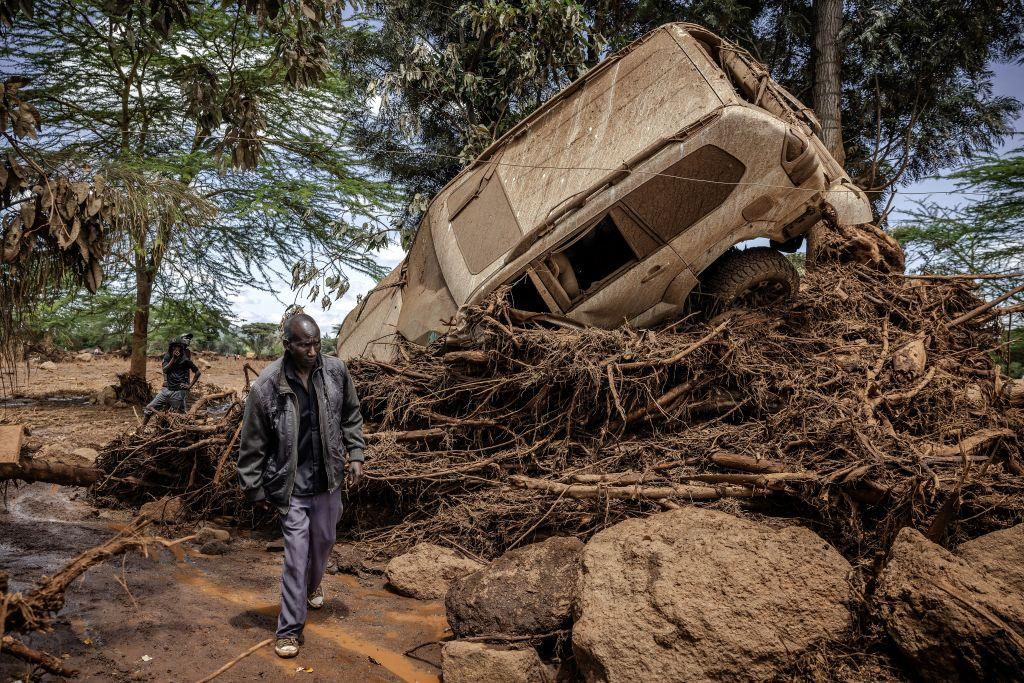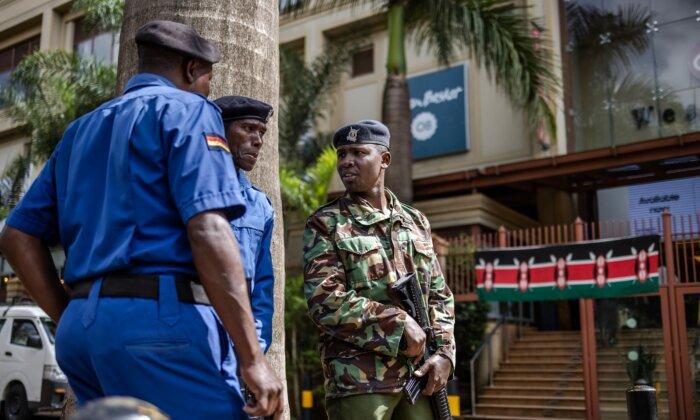Nairobi, Kenya—Since March, Kenya has faced unprecedented amounts of rainfall and, consequently, raging floods that have wreaked havoc as they sweep across the country. This has led to deaths and displacement of people and the destruction of croplands, leaving the East African nation facing a possible famine.
The most affected parts are in the western parts of the country near Uganda, the central parts including Nairobi, and the eastern parts near the Indian Ocean.
The Kenya Meteorological Department has predicted more rains in the coming days, asking citizens to brace themselves for possible disasters and to stay safe.
However, President William Ruto claims that his government is ready to face the situation, days after deaths and destruction caused by the floods.
“We are prepared for the situation that we face. We already have food supplies in place and support for those displaced. The floods that are ravaging our country have displaced close to 10,000 people in Nairobi,” Mr. Ruto said in a televised response, adding that his deputy was leading a response program to mitigate the effects of the floods.
He continued to say that the government had established a 24-hour disaster center to monitor the situation.
“Our take and that from experts show that these rains will taper and that we will see a lesser intensity of rain, but that is not to say that we are less prepared, or we are letting down our guard; we will continuously be monitoring the situation so that we can take care o any emergencies,” he said.
Early on April 29, a blocked railway tunnel that had trapped flood water burst its banks and swept through villages, coming in contact with traffic stuck from April 28 as motorists headed back into the city from the weekend upcountry.
The raging floods have led to 71 deaths, according to the latest reports by Kenya’s Deputy President Rigathi Gachagua who has visited the scene. Another 90 people have been reported missing in the area by their families, and another 110 have been admitted to Naivasha Hospital for treatment.
Search and rescue operations continue in the Mai Mahiu area on the Rift Valley escarpment, where the floods swept away homes and motorists as they cut through a section of the road to the capital, Nairobi, and the government said that it has deployed the Kenya Defense Forces officers to assist with the operations.
In Tana River County at the Kona Punda area, next to Garissa County in the eastern part of the country, a boat capsized on April 28, killing at least seven people, with 23 already rescued and 15 missing.
This happened when the floods destroyed the road joining Nairobi to Garissa and boats were brought in to help travelers cross to the other side. The government has since banned the use of boats in the area.
In Nairobi, slum residents who were hit hard by floods last week have accused the government, at the county and national levels, of neglecting them as they try to come to terms with the effects of the floods. The residents are now seeking shelter in schools and makeshift tents.
Nickson Omondi, a resident of Area Four in Nairobi’s Mathare slums who lost his son to the raging floods, said that he doesn’t feel like the government is doing enough, not only to find his son’s body but also to help all the other victims affected by the floods.
“They come here and take pictures, get their shoes dirty in the mud, and show off how hard they are working. Here, we have carried our own cross, working without any safety gear nor even getting food from anyone, just so we can save our mothers like we always have,“ he said. ”I just want to give my son a decent burial, and that is why I am hopeful that I will find his body. I will not stop until I find him.”
Kenya’s Education Cabinet Secretary sent out a communication at 1 a.m. on April 29, postponing the opening of school.
Internal Security Cabinet Secretary Kithure Kindiki gave a directive on April 29 to all County Security and Intelligence Committees across the country to inspect dams and water reservoirs within 24 hours as the government prepares to carry out compulsory evacuation of all those deemed to be in danger.
“To mitigate the further loss of life, County Security and Intelligence Committees (CSICs) across the country are directed to immediately inspect all public and private dams and water reservoirs in their jurisdictions within 24 hours effective at 1400 hours today,” Mr. Kindiki said.
Mr. Kindiki also asked the committees to deploy enforcement teams at urban and rural road spots prone to stormwater flooding and without bridges or where the water has breached the bridge to prevent motorists or pedestrians from dangerous crossovers and to arrest and prosecute offenders for attempted suicide or attempted murder, as the case may be.
His transport counterpart, Kipchumba Murkomen, said on April 29 that the country had lost 300 people since the beginning of the rains, though official government figures place the number of those killed at 169, according to government spokesperson Isaac Mwaura.
“The floods have also led to the displacement of 30,214 households comprising of approximately 190,942 persons,“ Mr. Mwaura said on April 30 at a press conference in Nairobi. ”Nairobi County is the worst hit with 147,031 people displaced accounting for over 77 percent of those displaced countrywide. The government empathizes with those affected and has subsequently set up 2 more displacement camps to provide alternative temporary accommodation. This brings the total number of displacement camps to 52 nationally.”







